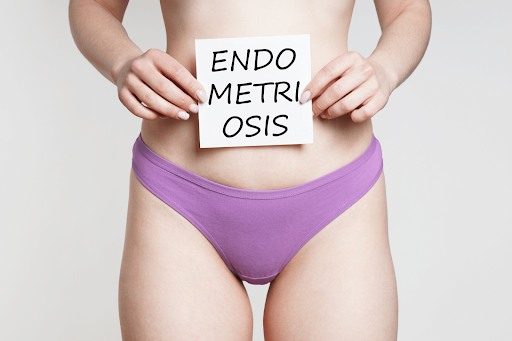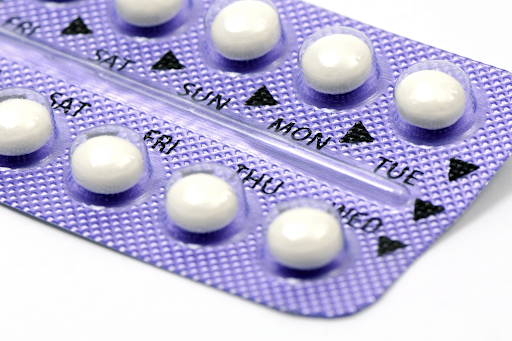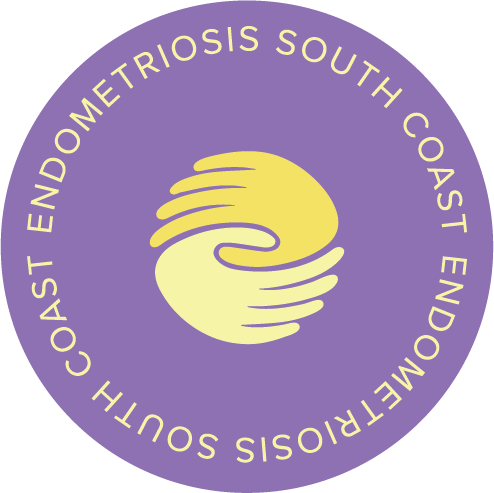October 17, 2022
The Difference Between Adenomyosis and Endometriosis: Let’s Learn

The difference between adenomyosis and endometriosis is often misunderstood. The conditions can often be confused with one another because they share many similarities.
Both are gynaecological diseases that involve the growth of uterine tissue. However, there are several key differences between these two conditions that you should be aware of.
In this blog post, we will discuss the key variance between them, including their signs and symptoms, biological differences and treatment options. If you’re ever worried you may be suffering from the symptoms we discuss – please contact your GP to get professional advice on your specific case.
What is The Endometrium?
The endometrium is the tissue that lines the inside of your uterus. The main function of this tissue is to act as a cushion for a developing embryo, as well as provide nutrients and oxygen once implantation has occurred in pregnancy.
Every month, during your menstrual cycle, your endometrium will thicken in preparation for pregnancy. If no pregnancy occurs, the thickened endometrium will be shed through menstruation.
When this lining grows in places it shouldn’t, it can cause one of two separate conditions that we are going to talk about today.
What is Adenomyosis?
This occurs when endometrial cells begin to grow within the muscle wall of the uterus. This can cause the uterine wall to become thicker and sometimes causes pain during menstruation or sex. The symptoms of adenomyosis can vary from person to person and some women may not experience any symptoms at all.
It is often diagnosed during a pelvic exam or ultrasound.
The tissue growths can appear as small bumps on the inside of the uterus. A biopsy may also be taken to confirm a diagnosis. As a result of an enlarged uterus, people can experience:
- Heavy and painful periods
- Pressure on the bladder and rectum
- Anaemia
- Unusual contraction of uterine muscles
What is Endometriosis?

The difference between adenomyosis and endometriosis that is most prominent occurs when endometrial cells grow outside of the uterus instead of in the walls. The most common places for this to happen are on the ovaries, fallopian tubes, and tissue lining your pelvis. However, in rare cases, it has been known to spread further throughout the body.
As we mentioned before, symptoms can always vary from person to person but are often more severe. The main symptom is pelvic pain that can occur during, before or after your period. You may also experience:
- Pain during or after sex
- Intestinal pain
- Chronic fatigue
- Difficulty getting pregnant
If you are experiencing any of these symptoms, please contact your GP as soon as possible for assistance.
What Causes These Conditions?
The cause of adenomyosis is unknown but it often resolves itself after menopause. It is thought that the two conditions share a common origin. One theory suggests that adenomyosis occurs when endometrial cells migrate from the uterus into the muscle wall during menstruation.
The cause of endometriosis is also not fully understood but there are a few theories. One is that the cells are able to move backwards through the fallopian tubes during menstruation and implant themselves in other areas. It has also been suggested that endometrial cells present at birth migrate to different areas of the body as we grow.
There are also thought to be certain factors that can increase your risk of developing either condition. These include:
- Uterine surgery
- Age
- Childbirth
- Family history
- First period before 11 years old
- Short menstrual cycle (less than 27 days)
- Periods lasting over 7 days
The Difference Between Adenomyosis and Endometriosis: Treatment
Both adenomyosis and endometriosis are painful chronic conditions that often go undiagnosed because they share similar symptoms with other uterine disorders like fibroids or pelvic inflammatory disease (PID).

Unfortunately, the latter is incurable and can be hard to treat. The main aim is to manage and control symptoms, rather than get rid of them altogether.
Endo
Women all over have reported debilitating pain alongside infertility issues. As it often interferes with daily life, there are a number of common treatment options to improve quality of life:
- Pain medication
- Hormonal contraceptives
- Hormone treatment
- Progestogens
- Surgery (laparoscopy or hysterectomy)
Surgery to remove growths or the entire uterus (hysterectomy) is usually only recommended as a last resort. If you do opt for surgery, it is important to speak to your doctor about all of the risks and side effects first.
Adeno
The goal of adenomyosis treatment is to stop menstrual bleeding and reduce pain. The most common treatments are:
- Hormonal contraceptives such as birth control pills, vaginal rings, or the patch
- Hysterectomy (removal of the womb) in extreme cases
A hysterectomy is the only cure for adenomyosis but some people have mild pain that can be managed with over-the-counter medication such as ibuprofen. However, it is always best to speak to your doctor before taking anything.
There are a number of other things you can do to ease symptoms such as:
- Exercise regularly
- Apply heat or cold packs to your pelvic area
- Try relaxation techniques such as yoga or meditation
- Cut down on caffeine and alcohol
- Quit smoking
- Eating a healthy diet rich in fruits, vegetables, and whole grains
Infertility
The truth is that unfortunately, either of these conditions can lead to fertility issues as it can cause damage to the ovaries, fallopian tubes, uterine wall and surrounding tissue. This makes it difficult for an egg to be released and travel to the womb. If you are struggling to get pregnant, there are a number of fertility treatments that may help including:
- IVF
- IUI
- Surgery to remove growths
- Gonadotropin-releasing hormone therapy
Some people may react differently to treatment and some people also choose not to have children because of their condition. The most important thing is that you make the decision that is right for you.
What To Expect At Your Doctor Appointment
You will likely be asked about your symptoms and medical history before carrying out a physical examination. This may entail feeling your belly for tenderness or hard areas.
They may also order tests such as an ultrasound, MRI, or laparoscopy. These tests can be used to rule out other conditions and distinguish the difference between adenomyosis and endometriosis. As well as this, it can also be a way of confirming your diagnosis.
Once a diagnosis has been made, your doctor will work with you to develop a treatment plan that is best for your personal circumstances. This may include medication, surgery, or lifestyle changes.
You should try to be as prepared as possible when attending to talk about your symptoms as they will probably want to know everything from:
- Frequency of symptoms
- Severity of pain
- Names of any medication you already take including birth control
- Whether anything improves or makes symptoms worse
- Family history
- When was your last period
Hopefully, you now have a better understanding of the difference between adenomyosis and endometriosis. If you think you may be suffering from either condition, it is important to book an appointment with your doctor. The sooner a diagnosis is made, the sooner you can start treatment and begin managing your symptoms.
Both can cause a great deal of pain and interference in day-to-day life. It is important to be aware of the differences between the two conditions in order to get the most effective treatment possible.

